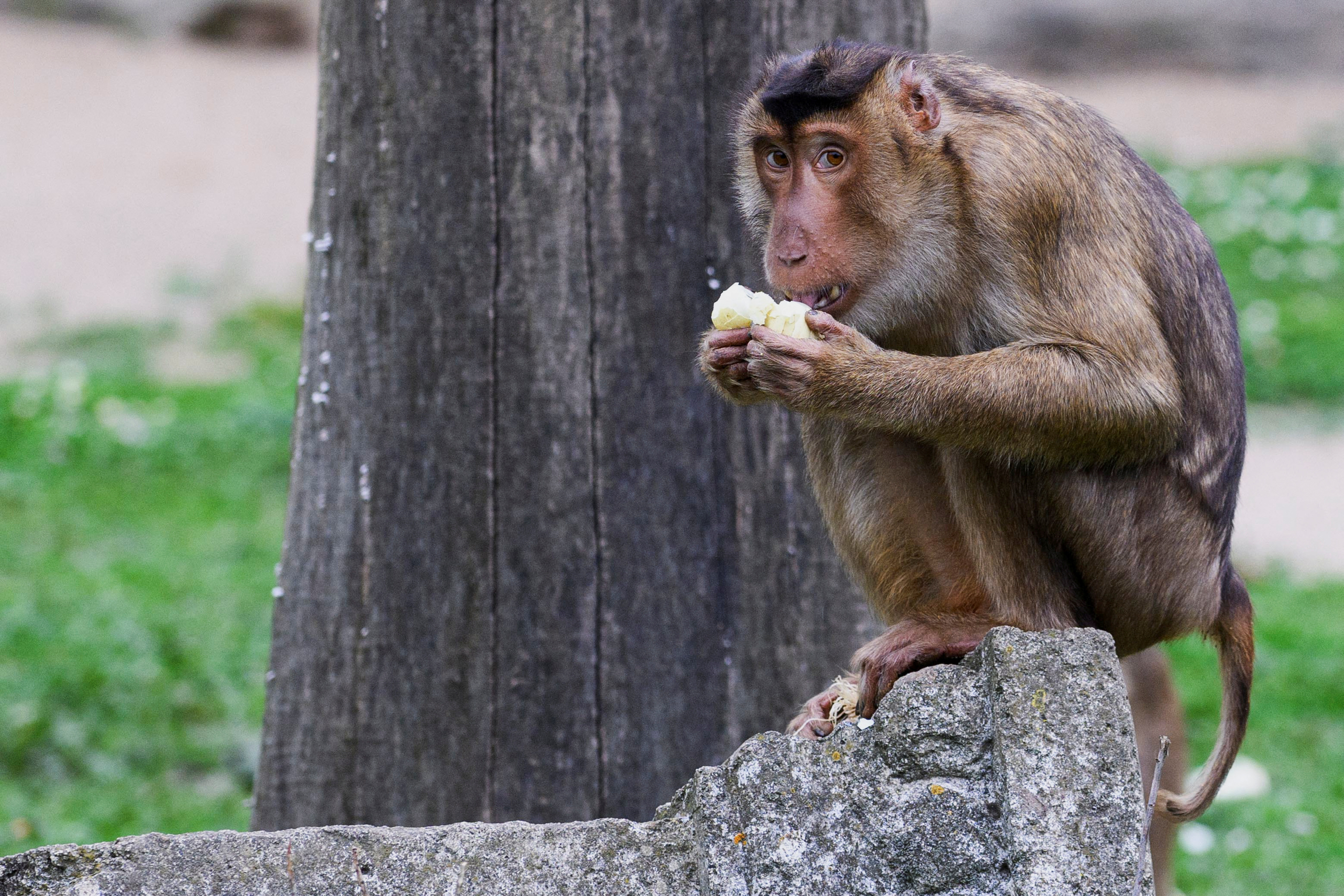
Hong Kong’s Centre for Health Protection has announced its first human case of B virus in a rare incidence of a virus being transmitted from animals to humans. The centre is urging the public to refrain from touching or feeding wild monkeys to reduce the risk of catching it.
Here is what we know about the B virus and the case in Hong Kong:
What is known about the B virus case in Hong Kong?
A 37-year-old man was reported to have been attacked and injured by monkeys at Hong Kong’s Kam Shan Country Park, also locally known as Monkey Hill, in late February. The precise nature of his injuries is not known.
A few weeks later, having become ill, the man, who otherwise had “good past health”, according to a statement published on the Hong Kong government’s website, was admitted to Yan Chai Hospital’s emergency department on March 21 with a fever and “decreased conscious level”.
On Wednesday this week, his cerebrospinal fluid specimen tested positive for the B virus at the Centre of Health Protection’s laboratory.
The man infected is now in a critical condition and is being treated in the intensive care unit of the hospital.
There are about 1,800 wild monkeys in Hong Kong, including two different macaque species and their hybrid, according to Hong Kong’s Agriculture, Fisheries and Conservation Department. The transmission of a disease from an animal to a human is known as zoonotic spillover.
What is B virus?
The B virus is also known as the herpes simiae virus. It produces flu-like symptoms such as fever, fatigue, muscle ache and headache. Symptoms can show up within a month of exposure to the virus, or as early as three to seven days after exposure, according to the United States Centers for Disease Control and Prevention (CDC) website.
Other symptoms include shortness of breath and nausea, the CDC website added.
Over time, blisters can appear on the body. As the virus progresses, it spreads to the brain and spinal cord, causing inflammation. This can cause problems with muscle coordination, brain damage and even death.
The virus can be diagnosed through a B virus polymerase chain reaction (PCR) test with saliva samples or material from blisters, if they are present.
While the Hong Kong case is the country’s first, the Centre for Health Protection said instances of the virus have been reported in other places including the US, Canada, mainland China and Japan.
How does B virus spread?
According to the CDC, the virus in humans is usually caused by macaque monkeys, which are commonly infected by the virus but do not typically display symptoms.
The B virus is naturally carried in the saliva, urine and stool of macaques, which are commonly found in Hong Kong, according to the CDC. Humans can be infected when bitten or scratched by macaque monkeys, or when tissue or fluid from a monkey enters via broken skin as a result of a cut or scratch they already have.
Other primates such as chimpanzees can contract the virus and frequently die from it but there have been no documented cases of these other primates spreading the virus to humans. There is no vaccine.
The Hong Kong Center for Health Protection recommends washing any wounds inflicted by a monkey under running water and seeking medical assistance immediately. The CDC recommends washing gently and scrubbing the wound for 15 minutes with soap, detergent or iodine and then running water over it for another 15 to 20 minutes before immediately seeking medical attention.
Humans are not infected with this virus frequently. According to the CDC website, since the virus was first identified in 1932, only 50 people have been documented with infections, and 21 of them have died. Veterinarians and lab workers who come in close contact with macaques are more vulnerable to the virus.
There has been one documented case of the virus spreading from one human to another, according to the Pennsylvania Health Department website.
Can it be treated?
Anti-viral medications can be used to treat the virus.
Antiretroviral therapy (ART), or the treatment of human immunodeficiency virus (HIV) using anti-HIV drugs, can also be prescribed but the CDC states that the decision on whether or not to prescribe ART takes into account several factors including the condition of the macaque, how properly and quickly the wound was cleaned and the nature of the wound, according to the Pennsylvania Department of Health website.







